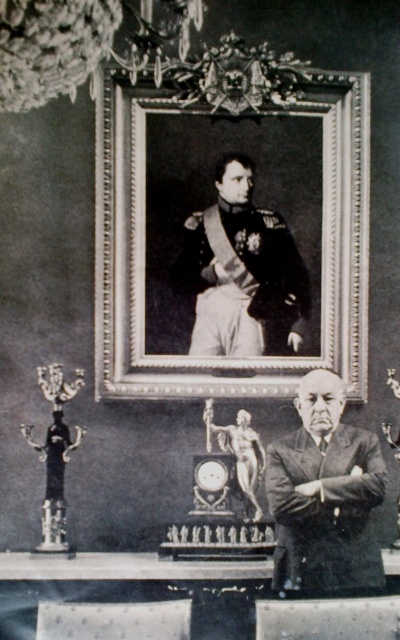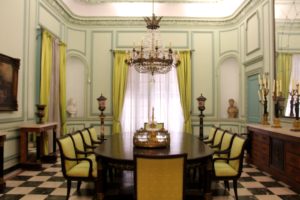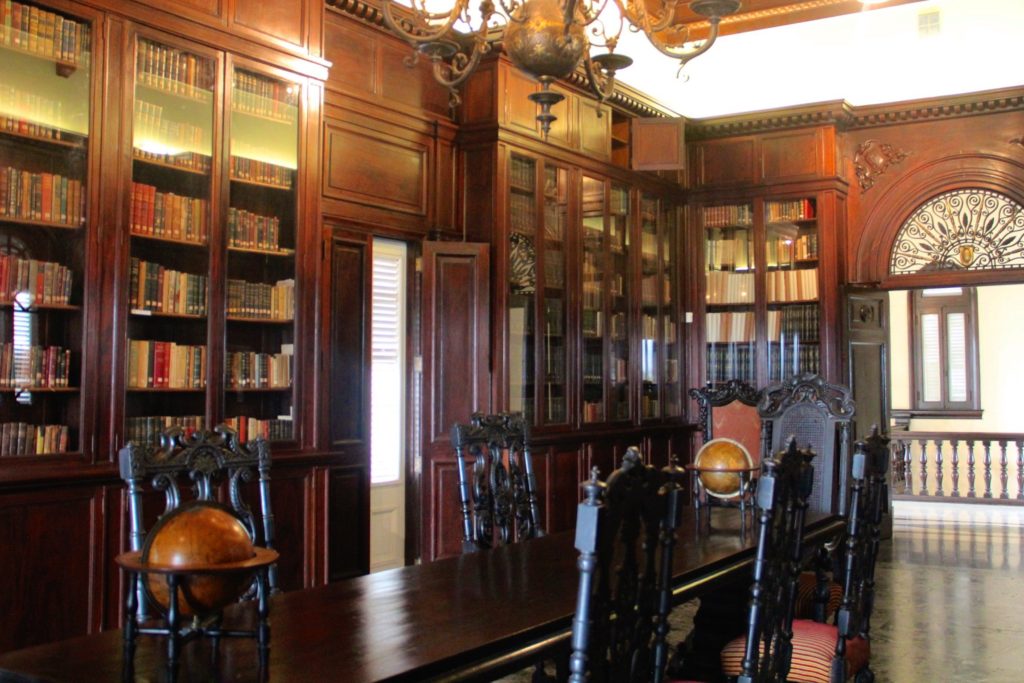
Who knew one of the world’s great Napoleonic museums is in Cuba? Surprisingly, Havana’s Museo Napoleónico contains the Western Hemisphere’s largest collection of artifacts associated with Napoleon Bonaparte. Thanks to the Napoleonic Historical Society, I got to visit it.
 The collection belonged to Julio Lobo (1898 – 1983), Cuba’s richest sugar cane magnate. Lobo, who was of Sephardic Jewish descent, admired Napoleon Bonaparte. For one thing, the Emperor had freed Europe’s Jews from centuries-old restrictions on landownership, political activity and professions. Second, Lobo emulated Napoleon’s ambition. Like Napoleon, he rose to great heights on his own merit, hard work and risk-taking. By the 1950s, Lobo was one of the richest men in the world.
The collection belonged to Julio Lobo (1898 – 1983), Cuba’s richest sugar cane magnate. Lobo, who was of Sephardic Jewish descent, admired Napoleon Bonaparte. For one thing, the Emperor had freed Europe’s Jews from centuries-old restrictions on landownership, political activity and professions. Second, Lobo emulated Napoleon’s ambition. Like Napoleon, he rose to great heights on his own merit, hard work and risk-taking. By the 1950s, Lobo was one of the richest men in the world.
The 20th-century sugar cane industry was a cut-throat business. I imagine Lobo saw himself as the Cuban Napoleon of Commerce, always one battle (or commodity trade) away from disaster. Like Napoleon, he worked intensely, relishing every challenge. And, like Napoleon, he was fearless, even in the face of assassination attempts. Cuba’s Communist Revolution was his Waterloo. In 1960, Fidel Castro’s government seized all his property. Lobo, who had spent a fortune collecting rare artifacts from Napoleon’s exile, was forced into his own exile.
If you are interested in reading more about Julio Lobo, I recommend reading John Paul Rathbone’s The Sugar King of Havana.
The Museo Napoleónico is housed in a beautiful 1920s palace. The building’s prerevolutionary owner, Orestes Ferrara Marino, like Lobo, ran afoul of the communist government.

This Grand Salon on the first floor features paintings, busts, and furniture as well as military uniforms and equipment. For example, they have the pistols Napoleon Bonaparte took on the Russian Campaign in 1812 and a beautiful table inlaid with portraits of the Marshals (Napoleon’s top generals).
 The second floor has several rooms of furniture, including chairs from Joseph Bonaparte’s Villa de Prangins in Switzerland and the Empire Period dining room shown below. Napoleon gave Josephine that chandelier when he came home from the Italian Campaign. Other artifacts on this floor include two of Napoleon’s death masks, Napoleon’s molar that was extracted on St Helena, and a container of dried Everlasting Daisies from St Helena (a flower I featured in an earlier blog post).
The second floor has several rooms of furniture, including chairs from Joseph Bonaparte’s Villa de Prangins in Switzerland and the Empire Period dining room shown below. Napoleon gave Josephine that chandelier when he came home from the Italian Campaign. Other artifacts on this floor include two of Napoleon’s death masks, Napoleon’s molar that was extracted on St Helena, and a container of dried Everlasting Daisies from St Helena (a flower I featured in an earlier blog post).
Julio Lobo’s extensive library of Napoleonic books in French, Spanish and English is housed in this beautiful room on the top floor. I would have loved to spend a few weeks doing research in that setting.

In upcoming blog posts, I’ll highlight some of my favorite individual pieces from the museum.

Excellent article. As a cuban I am proud to read about so many wonderful people that created this great country.
They are the ones who made our rich island. 🎨
I’m glad you enjoyed the article.You have a lot to be proud of! My husband and I had wonderful experiences visiting Cuba and meeting the warm, resourceful, talented people there. I hope my country and Cuba can find a way to work together.
All the best, Margaret
I am a Cuban living in exile, I wish for my Country of Birth to be freed from Communism so all Cubans can enjoy everything the Island has to offer all of is people. It is bitter sweet to see this I have not been there in 40+ yrs since I left but I worked at the Museum afterschool as a volunteer guide.
Dear Rebeca,
I am sorry for your exile from the island and hope my post brought back at least a few good memories. It’s so interesting that you were a volunteer at the Museo. In my short time in Cuba, I found the people to be incredibly warm, welcoming, and resilient. (There are a few more photos from my trip under the About Me/My travels section of this website.) I can only hope for a time of reconciliation that brings prosperity and freedom.
Wishing you well,
Margaret